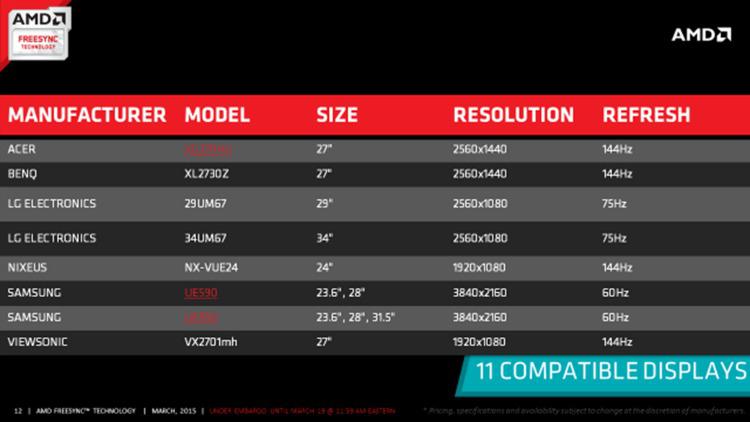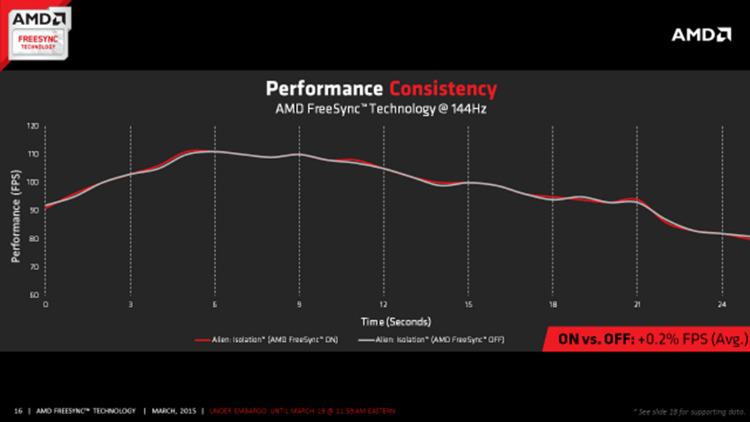The latest AMD Catalyst™ driver offers smooth gaming for avid gamers out there. This driver is equipped with AMD FreeSync™ technology. As of now, there are FreeSync technology-enabled monitors shipping or are about to ship imminently.
Below you’ll find a chart with all of the AMD FreeSync technology-compatible monitors announced to date. You may prefer the Acer or BenQ’s 1440p models that have a wide refresh rate range (40-144Hz). Alternatively, proponents of IPS panels or ultra-wide aspect ratios would be keen to check out the 29” or 34” options from LG. Up to 20 monitors supporting AMD FreeSync technology are in the pipe for 2015.
Viewing HD videos is comparable with gaming on AMD FreeSync technology. AMD FreeSync technology changes the game, fixing both tearing and stuttering with smooth gameplay at virtually any framerate.
AMD FreeSync technology costs virtually nothing for a monitor manufacturer to adopt. Most of them already had the relevant components in their supply chains, but needed the right software to come along to expose latent capabilities. With the help of VESA, the DisplayPort Adaptive-Sync specification was born to do exactly that.
DisplayPort Adaptive-Sync has no unique material or licensing costs, and AMD FreeSync technology builds on top of that industry standard to give gamers a benefit in all of their games.
All of these savings are reflected in the price tags. Several of the displays announced by our technology partners are up to hundreds cheaper than comparable displays featuring our competitor’s dynamic refresh technology. Other displays, like the ones from LG, are actually cheaper this year with AMD FreeSync than comparable models were last year without. This is the advantage from doing technologies the right way: as open standards with low and inexpensive barriers to entry. You’ve heard that from us time and time again, but it rings true with AMD FreeSync.
Expect a modest performance gain with AMD FreeSync enabled, and that too is the advantage of taking the time to thoughtfully develop an industry standard.
AMD FreeSync™ technology gives you the opportunity to turn Vsync off when the framerate of the application leaves the dynamic refresh range supported by the monitor.
So, if you have one of those 144Hz BenQ or Acer displays, but you’re a Counter-Strike: Global Offensive player that wants to run at 240 FPS is possible. With this, you can get beautifully smooth, tearing-free gameplay from 40-144Hz with those monitors, but you don’t have to sacrifice your input latency to get it when the framerate goes to 145+.
Below you can see a conceptual example of this relationship. In this theoretical exercise, the red line reflects framerates and input latency of an application Vsynced to 60Hz, and the blue line demonstrates the superior framerates and mouse latency of a game unrestricted by Vsync. This is a hypothetical scenario, and you’ll want to tinker with your favorite game, but AMD FreeSync actually gives you the choice—the competition doesn’t.
AMD FreeSync technology is free of incremental hardware costs, free of performance penalties, free as a standard, open for use by anyone in the gaming industry, and unbelievably smooth framerates are for PC gaming.


